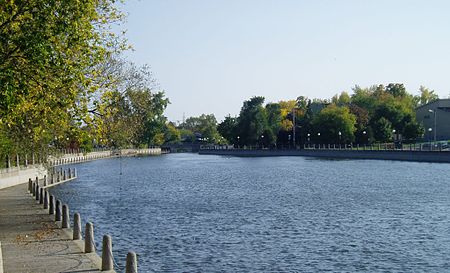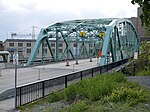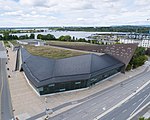Ruisseau de la Brasserie

Ruisseau de la Brasserie (English: Brewery Creek) is a small creek that forms the northern and western shores of Île Hull. It circles the downtown of the Hull sector, of Gatineau, Quebec. It runs from the Ottawa River just west of downtown Hull. Running west of Montcalm Street it turns east north of the highway, running up to Jacques Cartier Park where it rejoins the Ottawa River. Originally it was at the heart of Hull's industrial sector, with a number of factories. This included several breweries, from which it gets its name. In the 1980s the area was refurbished by the National Capital Commission. The former water works on a small island in the creek became the Théâtre de l'Île and the Montcalm Street Bridge was replaced by the ornate Tour Eiffel Bridge. Its pollution removed, it has become a popular location for birders.
Excerpt from the Wikipedia article Ruisseau de la Brasserie (License: CC BY-SA 3.0, Authors, Images).Ruisseau de la Brasserie
Sentier du Ruisseau-de-la-Brasserie Pathway, Gatineau Hull
Geographical coordinates (GPS) Address Nearby Places Show on map
Geographical coordinates (GPS)
| Latitude | Longitude |
|---|---|
| N 45.4247 ° | E -75.7246 ° |
Address
Explorateur II
Sentier du Ruisseau-de-la-Brasserie Pathway
J8X 2H3 Gatineau, Hull
Quebec, Canada
Open on Google Maps






